Abstract
OBJECTIVE--A recent prospective study in patients with dilated cardiomyopathy has reported that the disease is familial in at least 20% of cases, but the pattern of inheritance could not be ascertained. The presence of an autosomal dominant pattern, such as seen in hypertrophic cardiomyopathy, could make it possible to search for single gene defects with linkage analysis, whereas polygenic inheritance would be consistent with the autoimmune hypothesis. To assess the pattern of inheritance, we retrospectively identified patients with familial disease and assessed their first degree relatives (parents, siblings and children) for dilated cardiomyopathy. DESIGN AND PATIENTS--The family history of 105 consecutive patients with dilated cardiomyopathy was reviewed and 14 who had at least one first degree relative with documented disease were identified as probands. Their healthy relatives (109) were studied by physical examination, electrocardiography, M mode and cross sectional echocardiography, and were classified as unequivocally normal or as potential carriers. The potential carriers had abnormal electrocardiography with either at least one echocardiographic measurement of left ventricular cavity dimension or percentage fractional shortening outside 2 SDs of normal values (based on age and body surface area). The potential carriers underwent 24 hour Holter monitoring and maximal treadmill exercise. RESULTS AND CONCLUSION--Twenty three relatives (21%) were classified as potential carriers: 12 had an increased left ventricular end diastolic dimension, with reduced percentage fractional shortening in three; 11 had an abnormal electrocardiogram and increased end diastolic dimension, with reduced percentage fractional shortening in five. Such abnormalities were very mild and follow up is necessary to find whether such changes represent early disease. Pedigree analysis was most consistent with polygenic inheritance.
Full text
PDF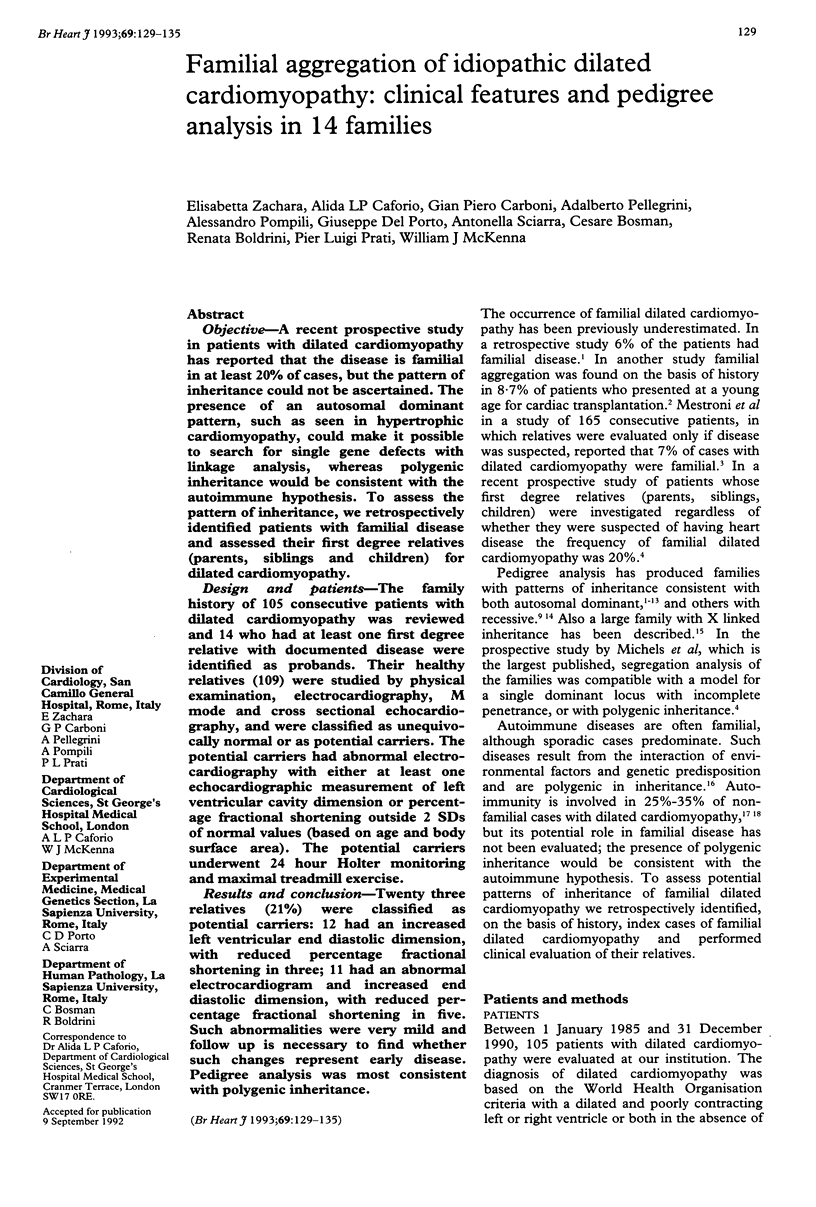
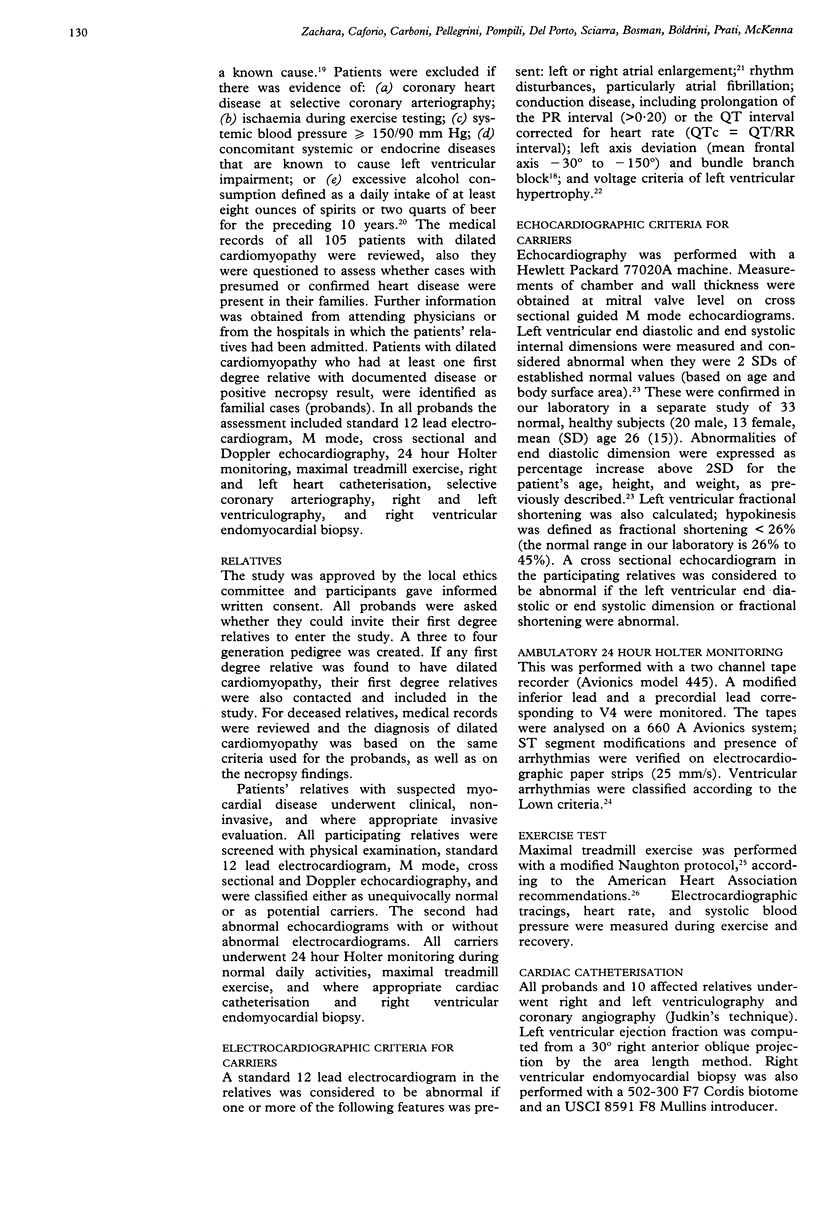
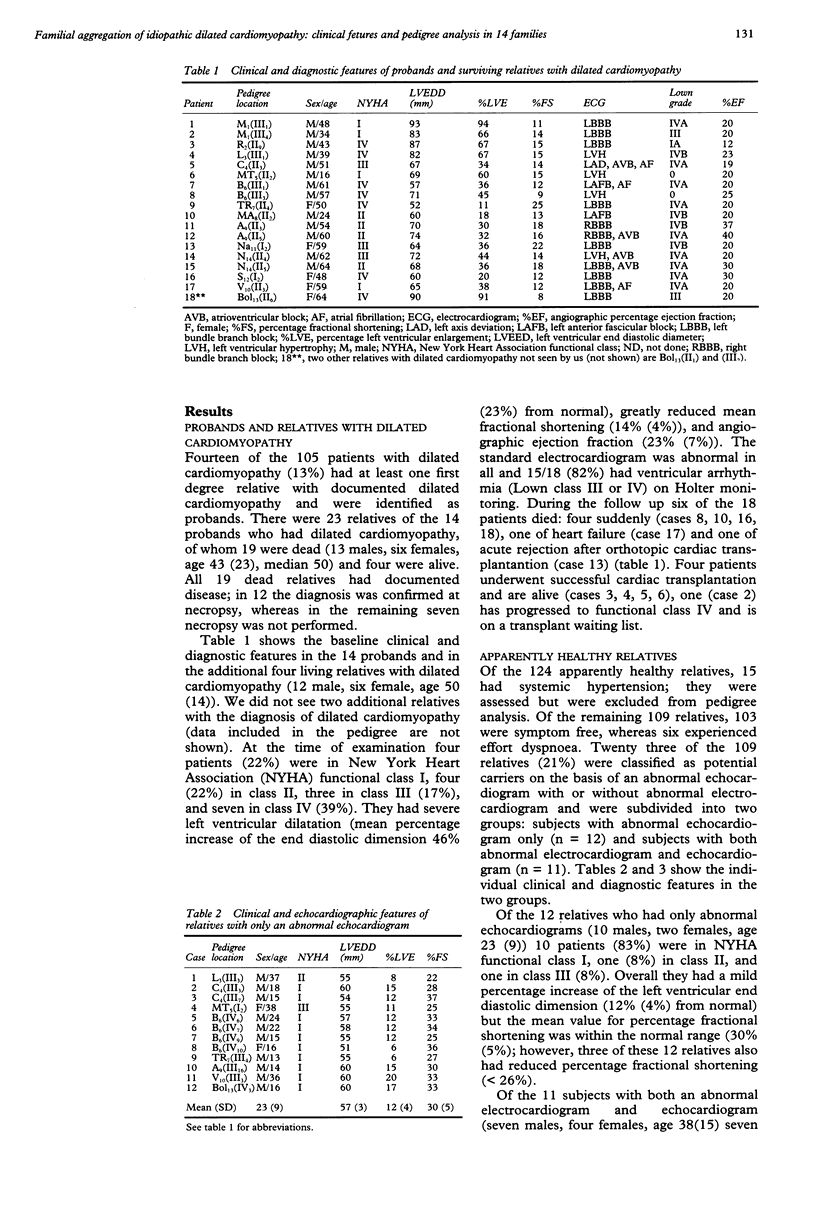
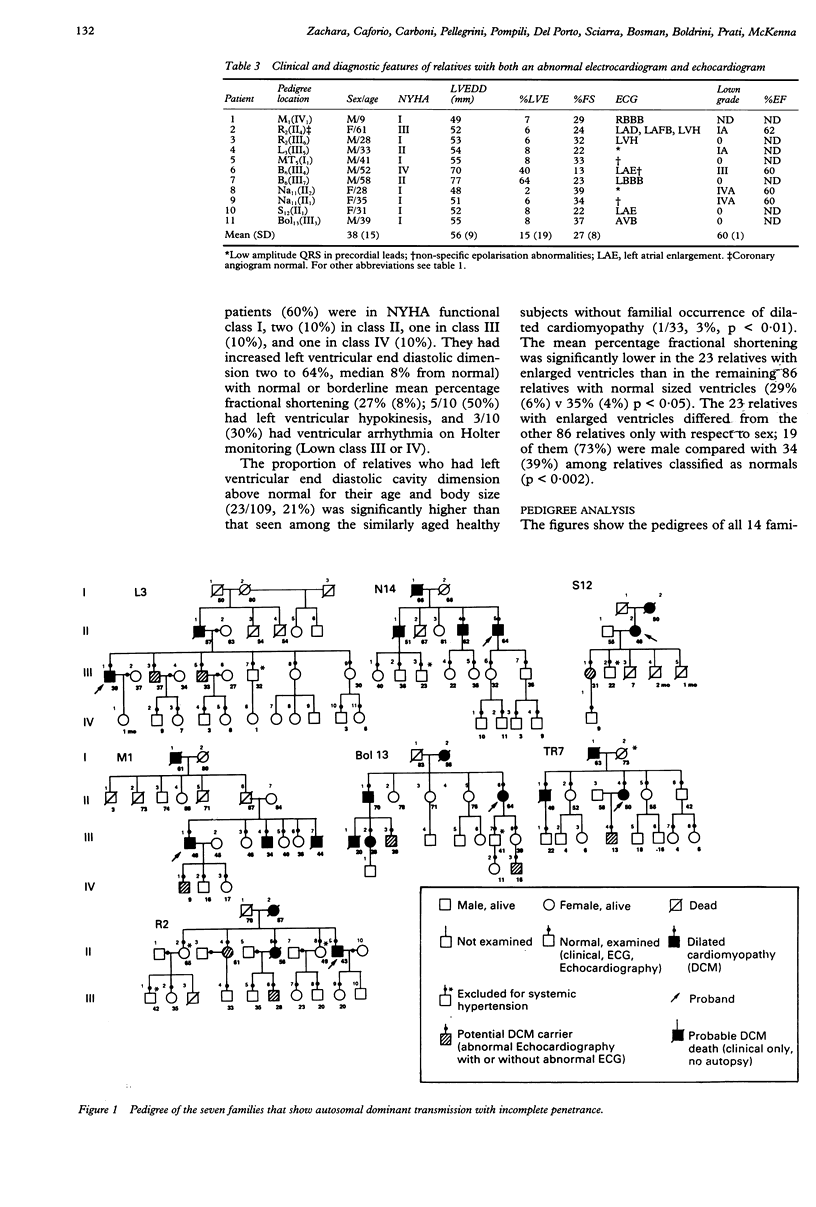
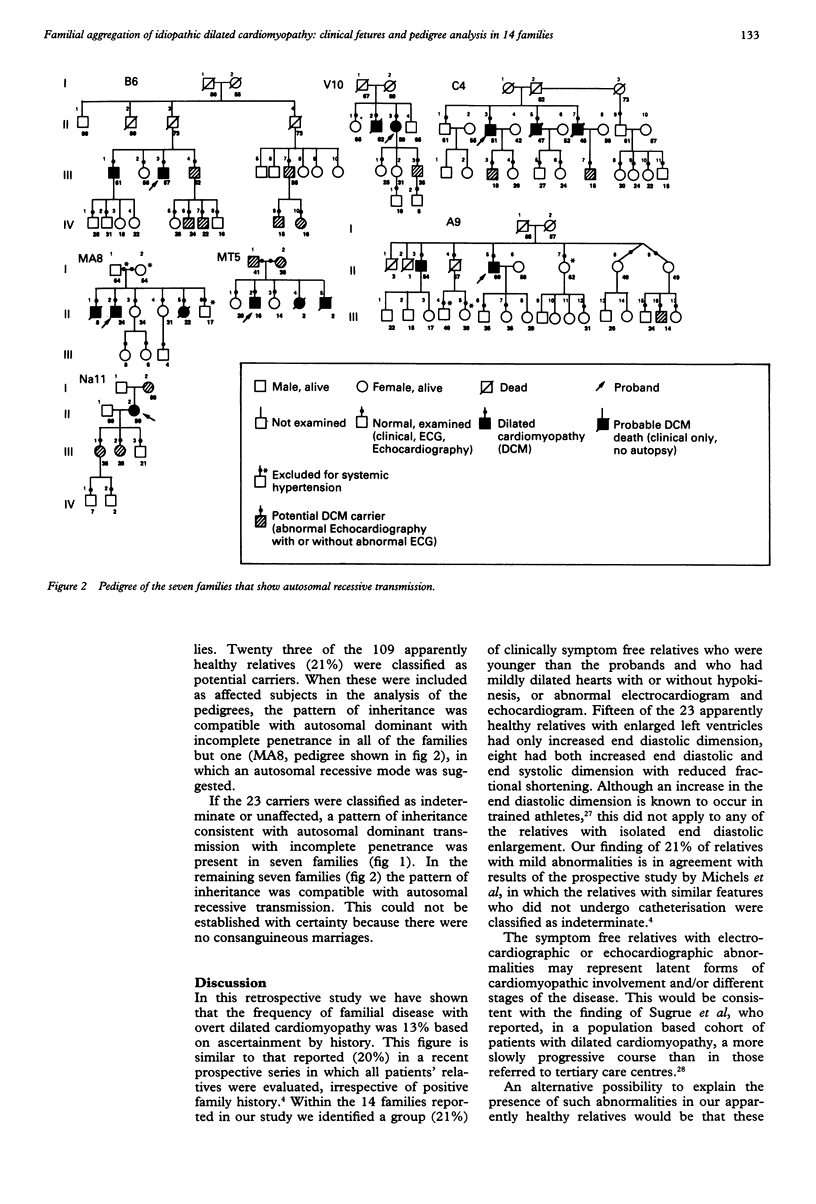
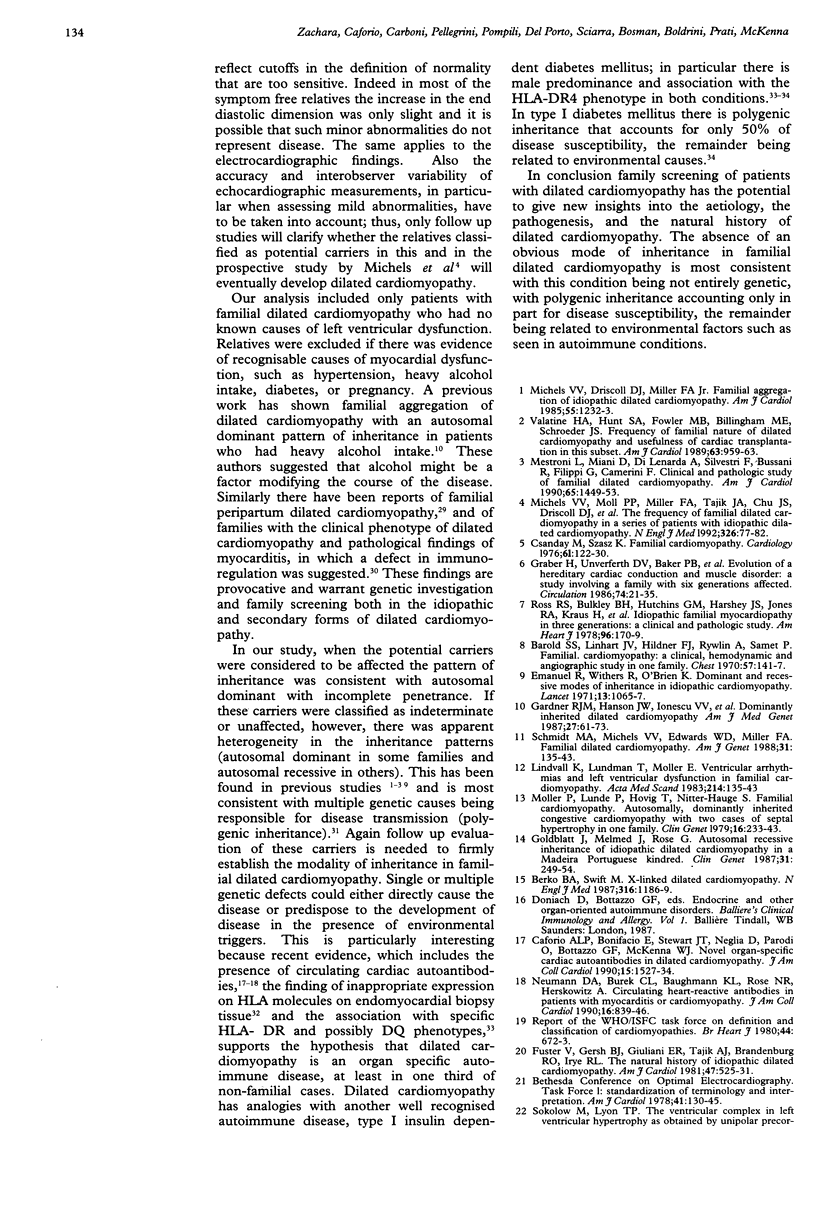
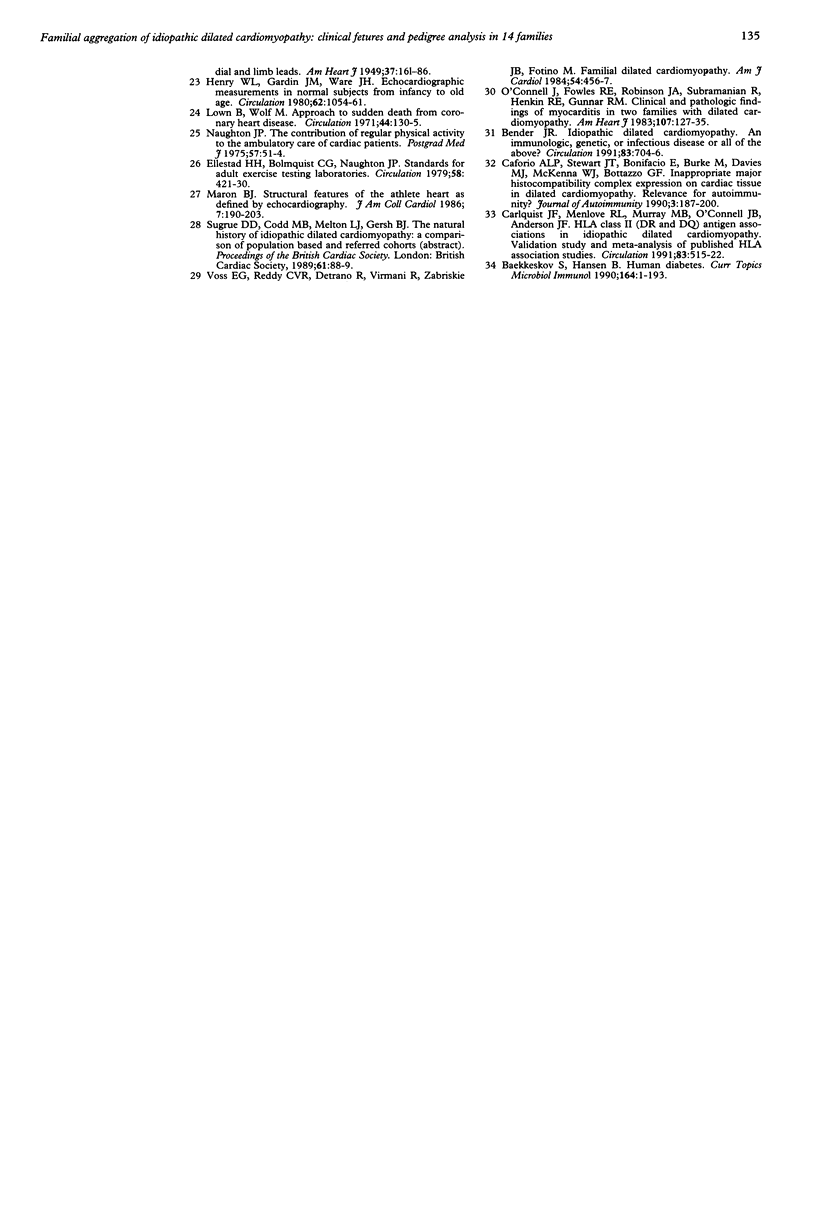
Selected References
These references are in PubMed. This may not be the complete list of references from this article.
- Barold S. S., Linhart J. W., Hildner F. J., Rywlin A., Samet P. Familial cardiomyopathy: a clinical, hemodynamic and angiographic study in one family. Chest. 1970 Feb;57(2):141–147. doi: 10.1378/chest.57.2.141. [DOI] [PubMed] [Google Scholar]
- Bender J. R. Idiopathic dilated cardiomyopathy. An immunologic, genetic, or infectious disease, or all of the above? Circulation. 1991 Feb;83(2):704–706. doi: 10.1161/01.cir.83.2.704. [DOI] [PubMed] [Google Scholar]
- Berko B. A., Swift M. X-linked dilated cardiomyopathy. N Engl J Med. 1987 May 7;316(19):1186–1191. doi: 10.1056/NEJM198705073161904. [DOI] [PubMed] [Google Scholar]
- Caforio A. L., Bonifacio E., Stewart J. T., Neglia D., Parodi O., Bottazzo G. F., McKenna W. J. Novel organ-specific circulating cardiac autoantibodies in dilated cardiomyopathy. J Am Coll Cardiol. 1990 Jun;15(7):1527–1534. doi: 10.1016/0735-1097(90)92821-i. [DOI] [PubMed] [Google Scholar]
- Caforio A. L., Stewart J. T., Bonifacio E., Burke M., Davies M. J., McKenna W. J., Bottazzo G. F. Inappropriate major histocompatibility complex expression on cardiac tissue in dilated cardiomyopathy. Relevance for autoimmunity? J Autoimmun. 1990 Apr;3(2):187–200. doi: 10.1016/0896-8411(90)90140-n. [DOI] [PubMed] [Google Scholar]
- Carlquist J. F., Menlove R. L., Murray M. B., O'Connell J. B., Anderson J. L. HLA class II (DR and DQ) antigen associations in idiopathic dilated cardiomyopathy. Validation study and meta-analysis of published HLA association studies. Circulation. 1991 Feb;83(2):515–522. doi: 10.1161/01.cir.83.2.515. [DOI] [PubMed] [Google Scholar]
- Csanády M., Szász K. Familial cardiomyopathy. Cardiology. 1976;61(2):122–130. doi: 10.1159/000169753. [DOI] [PubMed] [Google Scholar]
- Emanuel R., Withers R., O'Brien K. Dominant and recessive modes of inheritance in idiopathic cardiomyopathy. Lancet. 1971 Nov 13;2(7733):1065–1067. doi: 10.1016/s0140-6736(71)90383-7. [DOI] [PubMed] [Google Scholar]
- Fuster V., Gersh B. J., Giuliani E. R., Tajik A. J., Brandenburg R. O., Frye R. L. The natural history of idiopathic dilated cardiomyopathy. Am J Cardiol. 1981 Mar;47(3):525–531. doi: 10.1016/0002-9149(81)90534-8. [DOI] [PubMed] [Google Scholar]
- Gardner R. J., Hanson J. W., Ionasescu V. V., Ardinger H. H., Skorton D. J., Mahoney L. T., Hart M. N., Rose E. F., Smith W. L., Florentine M. S. Dominantly inherited dilated cardiomyopathy. Am J Med Genet. 1987 May;27(1):61–73. doi: 10.1002/ajmg.1320270108. [DOI] [PubMed] [Google Scholar]
- Goldblatt J., Melmed J., Rose A. G. Autosomal recessive inheritance of idiopathic dilated cardiomyopathy in a Madeira Portuguese kindred. Clin Genet. 1987 Apr;31(4):249–254. doi: 10.1111/j.1399-0004.1987.tb02803.x. [DOI] [PubMed] [Google Scholar]
- Graber H. L., Unverferth D. V., Baker P. B., Ryan J. M., Baba N., Wooley C. F. Evolution of a hereditary cardiac conduction and muscle disorder: a study involving a family with six generations affected. Circulation. 1986 Jul;74(1):21–35. doi: 10.1161/01.cir.74.1.21. [DOI] [PubMed] [Google Scholar]
- Henry W. L., Gardin J. M., Ware J. H. Echocardiographic measurements in normal subjects from infancy to old age. Circulation. 1980 Nov;62(5):1054–1061. doi: 10.1161/01.cir.62.5.1054. [DOI] [PubMed] [Google Scholar]
- Lindvall K., Lundman T., Möller E. Ventricular arrhythmias and left ventricular dysfunction in familial cardiomyopathy. Acta Med Scand. 1983;214(2):135–143. doi: 10.1111/j.0954-6820.1983.tb08585.x. [DOI] [PubMed] [Google Scholar]
- Lown B., Wolf M. Approaches to sudden death from coronary heart disease. Circulation. 1971 Jul;44(1):130–142. doi: 10.1161/01.cir.44.1.130. [DOI] [PubMed] [Google Scholar]
- Maron B. J. Structural features of the athlete heart as defined by echocardiography. J Am Coll Cardiol. 1986 Jan;7(1):190–203. doi: 10.1016/s0735-1097(86)80282-0. [DOI] [PubMed] [Google Scholar]
- Mestroni L., Miani D., Di Lenarda A., Silvestri F., Bussani R., Filippi G., Camerini F. Clinical and pathologic study of familial dilated cardiomyopathy. Am J Cardiol. 1990 Jun 15;65(22):1449–1453. doi: 10.1016/0002-9149(90)91353-8. [DOI] [PubMed] [Google Scholar]
- Michels V. V., Moll P. P., Miller F. A., Tajik A. J., Chu J. S., Driscoll D. J., Burnett J. C., Rodeheffer R. J., Chesebro J. H., Tazelaar H. D. The frequency of familial dilated cardiomyopathy in a series of patients with idiopathic dilated cardiomyopathy. N Engl J Med. 1992 Jan 9;326(2):77–82. doi: 10.1056/NEJM199201093260201. [DOI] [PubMed] [Google Scholar]
- Møller P., Lunde P., Hovig T., Nitter-Hauge S. Familial cardiomyopathy. Autosomally, dominantly inherited congestive cardiomyopathy with two cases of septal hypertrophy in one family. Clin Genet. 1979 Oct;16(4):233–243. doi: 10.1111/j.1399-0004.1979.tb00995.x. [DOI] [PubMed] [Google Scholar]
- Neumann D. A., Burek C. L., Baughman K. L., Rose N. R., Herskowitz A. Circulating heart-reactive antibodies in patients with myocarditis or cardiomyopathy. J Am Coll Cardiol. 1990 Nov;16(6):839–846. doi: 10.1016/s0735-1097(10)80331-6. [DOI] [PubMed] [Google Scholar]
- O'Connell J. B., Fowles R. E., Robinson J. A., Subramanian R., Henkin R. E., Gunnar R. M. Clinical and pathologic findings of myocarditis in two families with dilated cardiomyopathy. Am Heart J. 1984 Jan;107(1):127–135. doi: 10.1016/0002-8703(84)90146-7. [DOI] [PubMed] [Google Scholar]
- Ross R. S., Bulkley B. H., Hutchins G. M., Harshey J. S., Jones R. A., Kraus H., Liebman J., Thorne C. M., Weinberg S. B., Weech A. A. Idiopathic familial myocardiopathy in three generations: a clinical and pathologic study. Am Heart J. 1978 Aug;96(2):170–178. doi: 10.1016/0002-8703(78)90082-0. [DOI] [PubMed] [Google Scholar]
- Schmidt M. A., Michels V. V., Edwards W. D., Miller F. A. Familial dilated cardiomyopathy. Am J Med Genet. 1988 Sep;31(1):135–143. doi: 10.1002/ajmg.1320310116. [DOI] [PubMed] [Google Scholar]
- Valantine H. A., Hunt S. A., Fowler M. B., Billingham M. E., Schroeder J. S. Frequency of familial nature of dilated cardiomyopathy and usefulness of cardiac transplantation in this subset. Am J Cardiol. 1989 Apr 15;63(13):959–963. doi: 10.1016/0002-9149(89)90148-3. [DOI] [PubMed] [Google Scholar]
- Voss E. G., Reddy C. V., Detrano R., Virmani R., Zabriskie J. B., Fotino M. Familial dilated cardiomyopathy. Am J Cardiol. 1984 Aug 1;54(3):456–457. doi: 10.1016/0002-9149(84)90223-6. [DOI] [PubMed] [Google Scholar]


